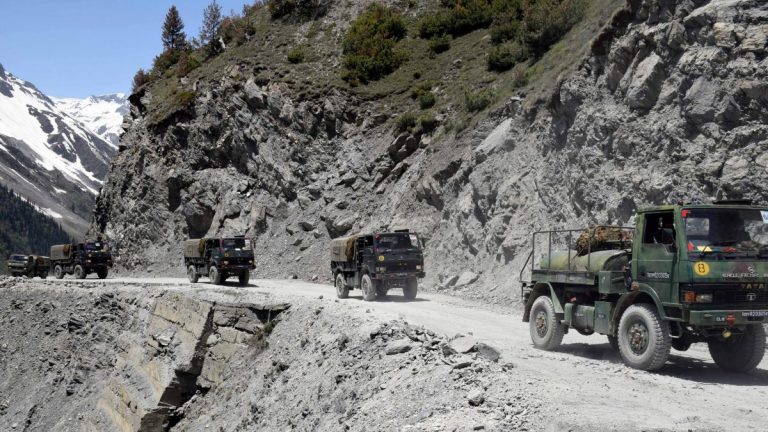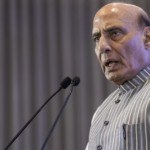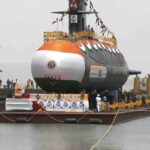
SOURCE: THE PRINT
The tensions with China in eastern Ladakh could eventually result in increased permanent deployment of forces in the Ladakh sector of the Line of Actual Control (LAC), in what could be termed as the “LoC-isation” of the LAC, ThePrint has learnt.
With higher deployment, some vantage points could get physical posts instead of being left open to risks of possible incursion by the People’s Liberation Army (PLA), said sources in the defence and security establishment.
The cost of permanent deployment in some forward areas will be high for India, but it will be higher for China as PLA troops have never had tenures in such harsh terrain, which the Indians are used to due to the Siachen and Line of Control deployments, said the sources.
Another possibility could be having a bigger reserve in depth areas than what was there before May when tensions grew, and a much larger surveillance system in place for observation of Chinese movement, said the sources.
India’s move on the southern banks of the Pangong Tso on the night of 29/30 August is the first instance of India changing tactics at the LAC and moving in to dominate territories claimed by both the sides.
So far, the understanding with the Chinese was that while both sides may claim the same territory, neither will move in and set up any posts until the overall border issue is settled, the sources.
However, China has broken this understanding a number of times in the past. Now, forward deployment of troops will continue to remain until China goes back to status quo ante, the sources said. However, the Ladakh sector could see additional deployment of troops and equipment for defensive postures once the tensions subside.
‘LoC-isation’ of LAC
Sources pointed out that the current stand-off began with China crossing the LAC and taking up positions in the areas claimed by both in the northern banks of Pangong Tso, Gogra and Hot Springs area.
“The concern is that the fallout of the current tension is ‘LOC-isation’ of the LAC. ‘LoC-isation’ does not mean incidents of exchange of fire but in terms of deployment. However, the Chinese are at greater disadvantage since they have never been deployed like this in such harsh terrain where the temperatures fall down to over -30 degrees,” said a source.
Over 1 lakh troops are deployed at the LoC which includes a three-tier anti-infiltration grid. So far, India had been trying to not have a “LoC mindset” at the LAC.
In an interview to ThePrint in September last year, then Army chief and current Chief of Defence Staff General Bipin Rawat had spoken against having an “LoC mindset at the LAC”. The focus of the armed forces was to have creation of reserves in depth and to have better surveillance systems in place.
Rawat had said he had been telling his men to mostly defend areas that are vulnerable, and carry out surveillance over areas that are less so.
‘LAC can’t be defended like LoC’
Lt Gen Vinod Bhatia (Retd), the former Director General of Military Operations (DGMO), said, “‘LoC-isation’ has different connotations. LoC is defined and there is a ceasefire agreement in place even though the Pakistan Army violates it.”
He said the LAC is not recognised, and each side has its own perception.
“There would definitely be dynamic deployment of forces. We need three ‘R’s – Reserve, Radar and Roads. We will have to increase our surveillance ability,” added Bhatia, who played a crucial role in the setting up of the 17 Corps, the Mountain Strike Corps.
However, the LAC cannot be defended like the LoC since the latter is only over 700 km, while the former is nearly 3,500 km long, he added.
‘Will have to wait and watch’
Lt Gen Satish Dua (Retd), former chief of the Integrated Defence Staff, sought to highlight that the LoC is active.
“Active in military terms is different. The LAC is active too but not in terms of the LoC. ‘LoC-isation’ of the LAC is a wrong term but definitely there would be increased deployment. However, one will have to wait and watch how big the extra deployment will be,” he said.
Dua added that the kind of deployment seen at the LoC now has been built over the years.
“Both sides have done tactical jockeying. But one will have to wait and watch to see how this changes the dynamic on the ground eventually,” he said.
The 14 Corps Command, which looks after the crucial LAC in the northern sector, has already sought a number of key equipment to be purchased under emergency procurement.
The list includes various types of Unmanned Aerial Vehicles for surveillance, fast interceptor boats for both patrol and quick deployment, and All Terrain Vehicles for faster movement in the mountainous terrain.






